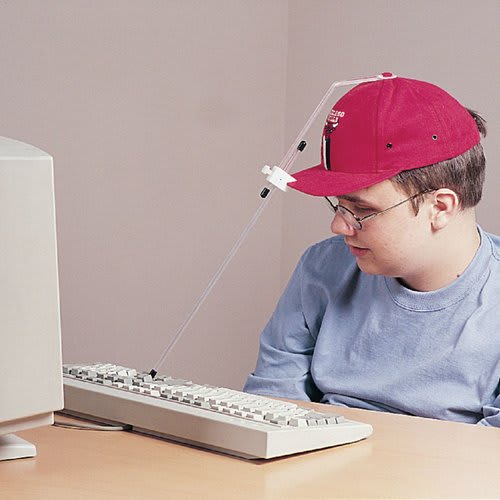The purpose of technology
Technology evolves at an ever increasing pace, every year there is a new iPhone product with better lens and more features.
In a not so distant past insulin was harnessed from pigs and cows, but since the 80s recombinant DNA is used to produce this medication by inserting a human gene into the genetic material of a common bacterium.
So what is the purpose of technology? Is it profit? Is it to increase life expectancy and eradicate disease? Guarantee a sustainable future for the planet and the future generations?
It is possible to strive for all these, but a very important purpose of technology is to connect people.
Technology connects people
Humans have been looking for ways of connecting people as far back as Ancient Greece. In those times people reunited in the agora, a public space, to shop, discuss different political views. It is hard to imagine nowadays a marketplace and a courtroom side by side where everyone is welcome to speak and consider views other than their own.
Note: Agora can be literally translated to "gathering place" or "assembly".
But, even though there was a lot of engagement between people and their local community, which is something that many believe is lacking nowadays, distance was a problem, for the average citizen it was hard to connect with and maintain contact with people far away, news traveled slowly.
Humans are obsessed with solving problems, we have harnessed technology to communicate in many different ways, the printing press allowed newspapers to connect people, afterwards the telephone, the radio, the tv, the internet with computers and cellphones.
But even with all these advances there is a significant amount of the human population that become excluded without being able to enjoy the benefits of technology to connect and learn. They are invisible to technology and most of the time their unique needs are not taken into account when developing these technologies.
Who are the people invisible to technology?
The World Health Organization (WHO) conducted a study and published its results in the Disability and health fact sheet. According to it "Over a billion people, about 15% of the world's population, have some form of disability". It also states that "Between 110 million and 190 million adults have significant difficulties in functioning."
https://www.who.int/en/news-room/fact-sheets/detail/disability-and-health
Disabilities categories
Visual impairments
They include people that suffer with blindness, color-blindness and low vision, the World Health Organization estimates that "285 million people are estimated to be visually impaired worldwide".
Many websites set font size with px instead of using the relative units, this overrides the browsers ability to allow a user with low vision to enlarge the font-size though its settings.
Because of that web browsers took matter onto their own hands and now have zooming capabilities to help fix this problem.
Some people use screen readers, software that reads text aloud, but for information to be read properly it requires the website to be optimized with semantic HTML. Using the visibility: hidden CSS property hides an HTML element from the accessibility tree, so the screen reader cannot read the information increasing exclusion.
Auditory impairments
They include people that suffer with deafness and loss of hearing, the World Health Organization estimates that "466 million people worldwide have disabling hearing loss".
These people use ATs that are Assistive Devices for People with Hearing, Voice, Speech, or Language Disorders.
It is also essential for websites to provide textual alternatives to audio content:
- Text transcripts that can be displayed with audio visual content.
Motor impairments
Includes people that have disabilities related to movement.
- Physical issues: related to a temporary or permanent paralysis or a loss of limbs.
- Neurological and/or genetic disorders: responsible for loss of control in limbs or weakness.
- Both
Due to this many people cannot use a mouse, have a slow response time and/or limited fine motor control, The US Centers for Disease Control and Prevention's Disability and Functioning statistics estimate that in the US "Percent of adults with any physical functioning difficulty: 16.1%".
Some people have been paralyzed to such a degree that head pointers are necessary to utilize the computer. Picture from https://www.performancehealth.com/baseball-cap-head-pointer
Cognitive impairments
Includes people that have a broad range of disabilities, such as learning disabilities (dyslexia and attention deficit hyperactivity disorder), distractibility, inability to remember or focus on large amounts of information. It also includes people with mental illnesses, such as depression and schizophrenia.
These impairments may introduce difficulty when interacting with websites, such as having a hard time understanding content or confusion created by inconsistent webpage layouts. An example of an inconsistent and unintuitive layout is a computer software that has its x button responsible for closing the application on the lower left side of the screen.
Accessibility and programming
Each kind of impairment brings unique challenges and requires strategy in content design. Accessibility is keeping these unique challenges in mind and building strategies that have a usability that goes beyond people with disabilities.
An example of this is that everyone enjoys websites that have intuitive navigation, useful illustrations, and content that is organized in a logical manner.
Another example is that while users with disabilities need captions and transcripts, they are useful to anyone that is using multimedia in environments that are too noisy or in an environment that is silent when they do not have earbuds.
With accessibility in mind the Web Content Accessibility Guidelines (WCAG) Overview were created to promote inclusion in the internet. In future posts I will use WCAG to talk more in depth about the unique challenges each type of impairment presents and strategies to tackle them.
Let's talk about this
Contact me through my social media, seriously. Let's talk about accessibility and programming in general, be it on LinkedIn or GitHub.
Technology can be accessible to a broader audience by having diverse people build while collaborating and sharing their unique needs and experiences.











Top comments (0)